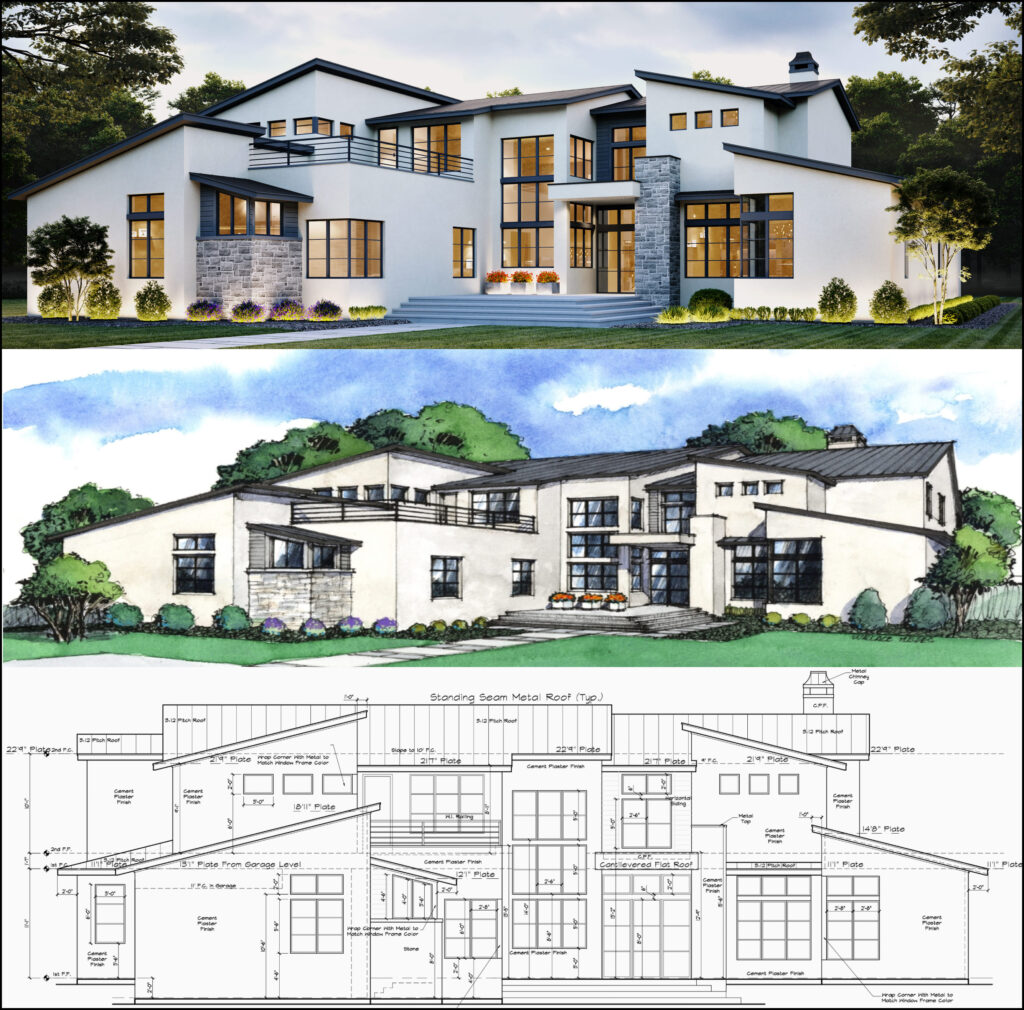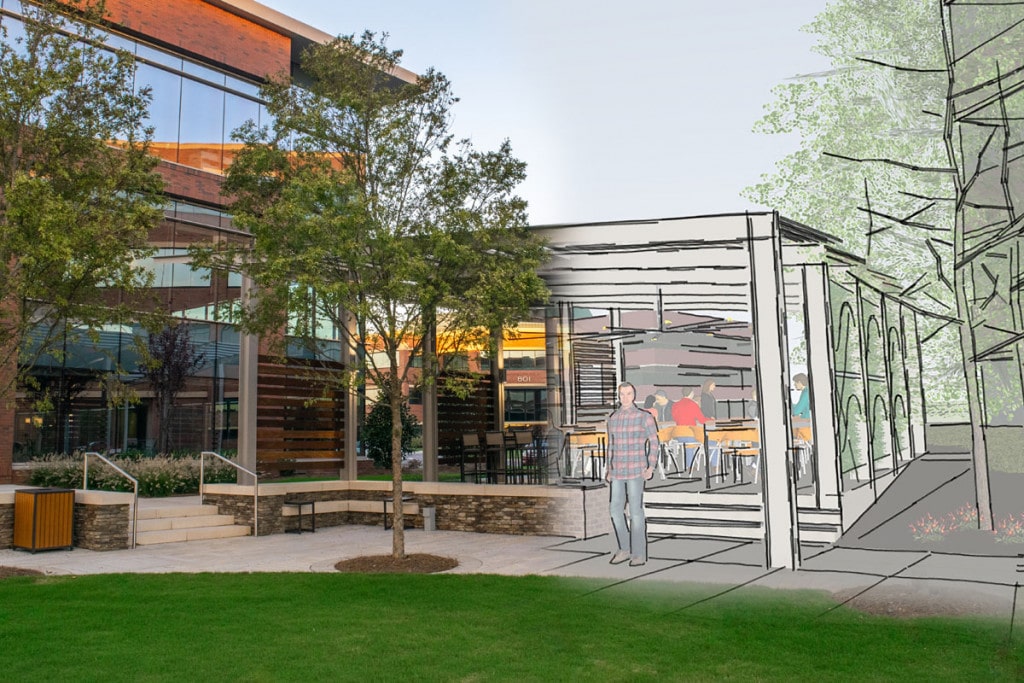The Influence of Technical Improvements on the Design Practices of Contemporary Architects
The rapid evolution of technological tools has dramatically improved the design landscape for modern engineers, cultivating extraordinary levels of advancement and sustainability. Discovering these dynamics reveals a nuanced interplay in between technology and traditional style techniques, triggering a better examination of what the future holds for architectural practices.
Advancement of Architectural Tools
Exactly how have building devices changed the style and construction procedures over the centuries? The evolution of building devices has actually substantially affected the effectiveness, precision, and imagination of style and building. In ancient times, engineers count on basic tools such as plumb bobs, measuring rods, and fundamental geometry to develop frameworks. These tools laid the structure for very early building practice, allowing for the construction of iconic structures, albeit with limitations in accuracy and complexity.
With the advent of the Renaissance, the introduction of the compass and the protractor noted a critical shift. These devices enabled designers to achieve better accuracy in their styles, helping with the introduction of more complex and in proportion structures. The Industrial Change additionally transformed building exercise with the introduction of mechanized devices and materials, permitting for larger and extra ambitious jobs.
In the 20th century, the growth of computer-aided layout (CAD) software program changed the landscape once more, giving architects with extraordinary abilities in modeling and visualization. Today, advanced tools such as Building Details Modeling (BIM) and parametric style software program remain to push the limits of building advancement, making it possible for a more integrated technique to design and construction processes.
Improved Collaboration in Design
As modern technology continues to evolve, improved collaboration in style has actually come to be a foundation of contemporary building technique. The assimilation of electronic tools such as Structure Details Modeling (BIM), cloud-based platforms, and progressed visualization software has changed the way engineers, engineers, and stakeholders connect throughout the layout procedure. These tools promote real-time interaction, permitting groups to share concepts, modifications, and comments instantaneously, despite geographical location.

Furthermore, interdisciplinary partnership has actually been structured with these technical improvements, allowing architects to work more carefully with various other professionals, such as metropolitan organizers and environmental consultants. The result is an extra natural technique to design that takes into consideration different point of views and knowledge. Eventually, boosted cooperation in design is not simply a pattern; it is important for developing cutting-edge, functional, and cosmetically pleasing architecture in a significantly intricate world.
Sustainability Via Technology
Sustainability in architecture has significantly become intertwined with technological innovation, driving the industry towards environmentally accountable techniques - cda architects. Contemporary designers are leveraging sophisticated technologies to lessen ecological impact while enhancing the efficiency of buildings. One popular instance is making use of Structure Details Modeling (BIM), which permits precise preparation and resource allowance, decreasing waste during building and construction and advertising energy effectiveness throughout a structure's lifecycle
Moreover, wise materials and energy-efficient systems are being integrated into styles to optimize resource usage. Technologies such as solar cells and green roof harness renewable energy sources, adding to decreased carbon impacts. Additionally, the application of expert system in design procedures makes it possible for architects to simulate and evaluate energy consumption, directing choices towards even more sustainable end results.
The assimilation of lasting technologies not just straightens with global environmental objectives yet likewise meets a raising demand from consumers for environment-friendly remedies. As designers embrace these advancements, the focus changes in the direction of producing spaces that are not just cosmetically pleasing yet additionally functionally lasting, therefore redefining the requirements of contemporary architecture. This way, innovation works as a stimulant for sustainability, enabling engineers to design buildings that regard and boost the natural surroundings.
Challenges in Implementation
While technical improvements in architecture hold fantastic pledge my explanation for boosting sustainability, their execution usually encounters significant obstacles - cda architects. One main barrier is the steep learning curve related to new innovations. Engineers and building experts might require extensive training to properly use sophisticated software and tools, which can delay project timelines and enhance costs
Furthermore, the assimilation of emerging innovations, such as Structure Details Modeling (BIM) and lasting materials, usually necessitates partnership across multidisciplinary teams. This partnership can be prevented by distinctions in proficiency, workflows, and communication designs, causing potential conflicts and inefficiencies.
Financial restrictions better make complex the fostering of innovative modern technologies. Many building companies, specifically smaller ones, might do not have the resources to buy sophisticated devices, restricting their ability to complete with larger companies that can pay for such financial investments.
In go to website addition, regulative structures and building regulations might not equal technical innovations, developing ambiguity and potential compliance issues. This obstacle can inhibit engineers from fully welcoming new technologies, as the danger of non-compliance might exceed the advantages. Addressing these application difficulties is essential for the successful integration of technological innovations in modern building techniques.
Future Fads in Style
The difficulties related to the execution of brand-new technologies in style have actually prompted a reevaluation of future patterns within the market. As architects navigate problems such as sustainability, urbanization, and social equity, they are progressively embracing cutting-edge technologies to enhance style effectiveness and environmental performance.
One famous fad is the combination of synthetic intelligence (AI) in the design process. AI tools can examine huge datasets to inform style choices, boosting both imagination and functionality. Likewise, Structure Information Modeling (BIM) remains to advance, making it possible for real-time cooperation amongst stakeholders and helping with streamlined job management.
Sustainable layout practices are likewise getting momentum, with designers concentrating on adaptive reuse and regenerative layout principles that reduce resource intake and waste. The incorporation of smart materials and renewable power sources will even more boost the resilience of buildings in the face of climate adjustment.

Conclusion
Technical advancements have actually significantly reshaped building design practices, assisting in enhanced accuracy, collaboration, and sustainability. The assimilation of devices such as Building Info Modeling and parametric style software program, along with expert system and smart materials, empowers engineers to attend to intricate challenges better. While application might provide particular obstacles, the ongoing development of these technologies promises to drive advancement in architecture. Future patterns will likely additionally stress sustainability and performance, ultimately redefining the built environment.
Comments on “The Creative Refine Behind Successful Tasks from CDA Architects”